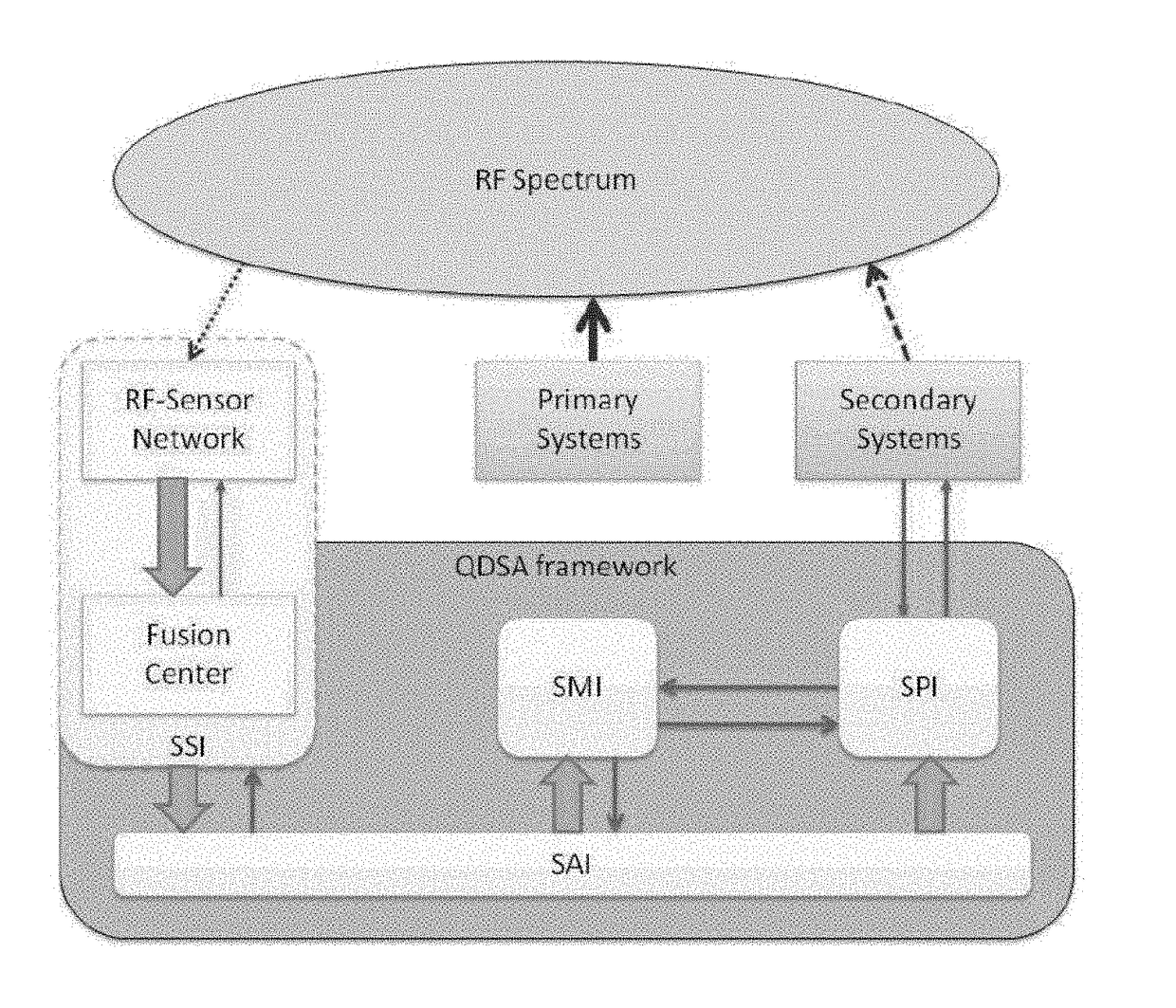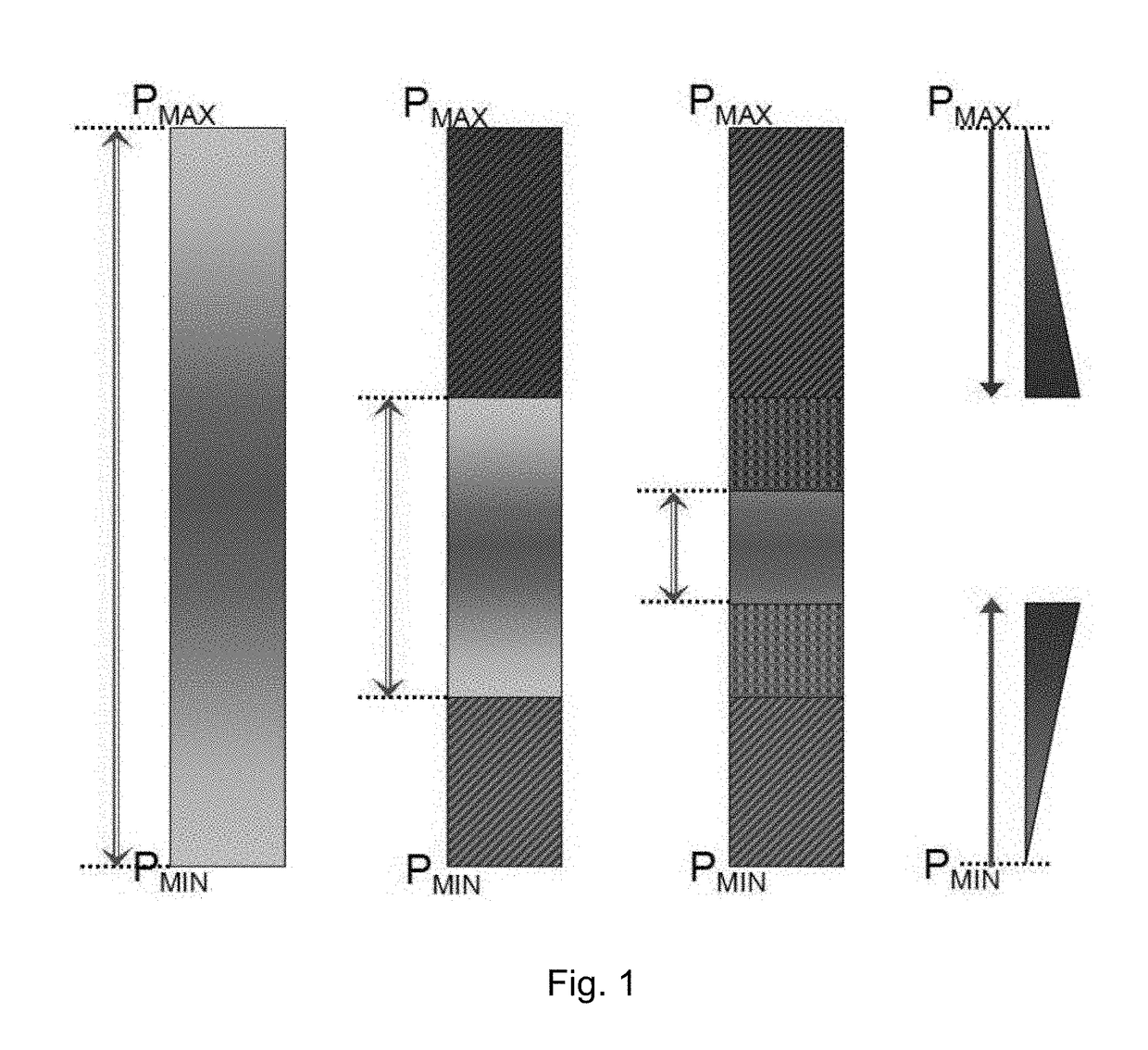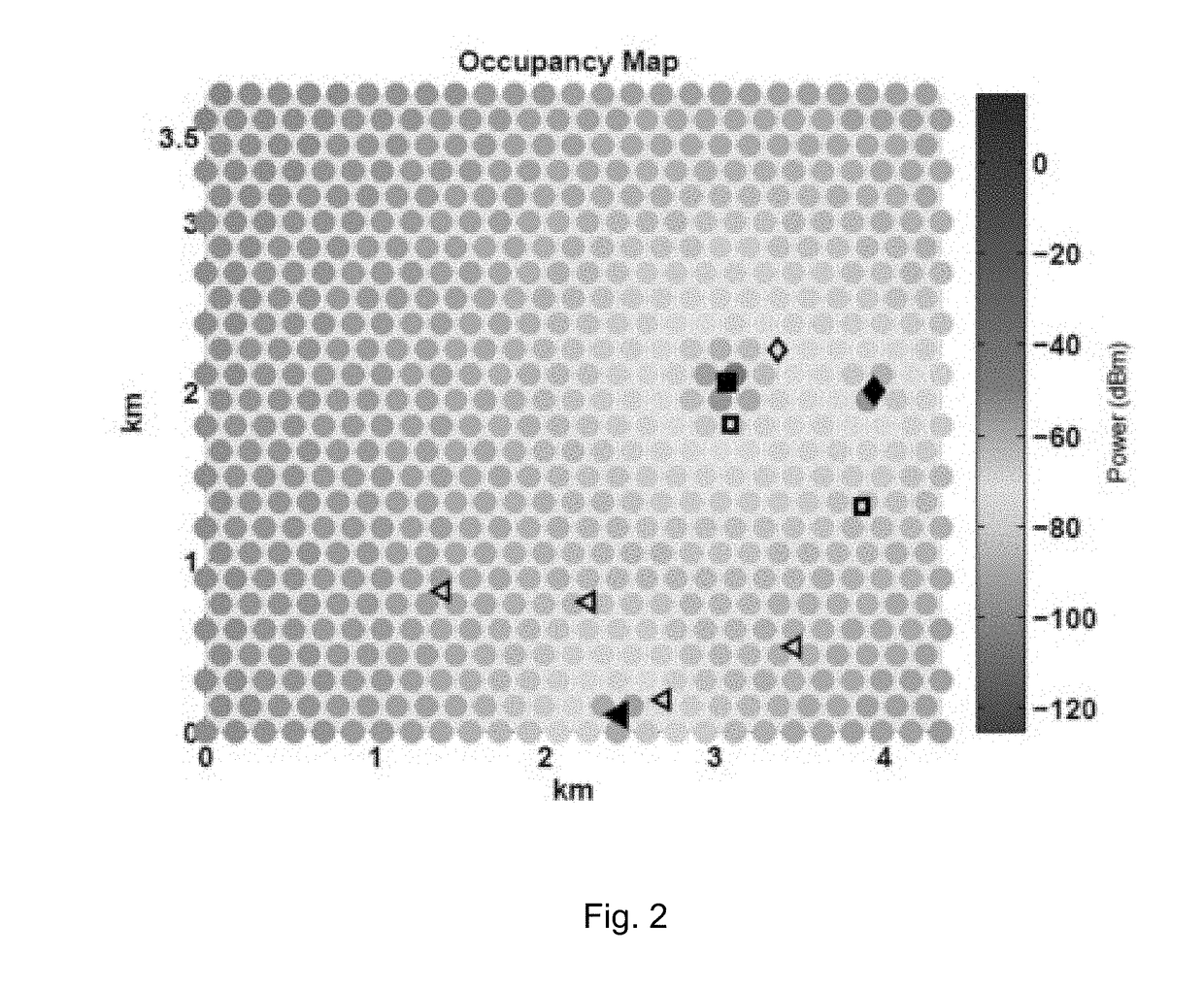Methods and systems for spectrum management
- Summary
- Abstract
- Description
- Claims
- Application Information
AI Technical Summary
Benefits of technology
Problems solved by technology
Method used
Image
Examples
Embodiment Construction
MUSE: A Methodology for Characterizing and Quantifying the Use of the Spectrum in the Space, Time, and Frequency Dimensions by Individual Transceivers.
[0042]Traditionally, the radio frequency (RF) spectrum has been statically and exclusively allocated. This static spectrum allocation paradigm results into an inefficient usage of the spectrum in time, space, and frequency dimensions. In order to meet the growing demand for the new and high bandwidth wireless services, the spectrum can be dynamically shared by multiple wireless service providers.
[0043]The dynamic spectrum sharing paradigm presents new challenges on technical, regulatory, and business fronts. For effective spectrum sharing, non-harmful interference needs to be ensured among multiple heterogeneous RF-systems under the dynamic RF-environment conditions. With the static and exclusive spectrum allocation paradigm, the spectrum-access parameters for a service are chosen so as to mitigate potential interference and ensure mi...
PUM
 Login to View More
Login to View More Abstract
Description
Claims
Application Information
 Login to View More
Login to View More - R&D
- Intellectual Property
- Life Sciences
- Materials
- Tech Scout
- Unparalleled Data Quality
- Higher Quality Content
- 60% Fewer Hallucinations
Browse by: Latest US Patents, China's latest patents, Technical Efficacy Thesaurus, Application Domain, Technology Topic, Popular Technical Reports.
© 2025 PatSnap. All rights reserved.Legal|Privacy policy|Modern Slavery Act Transparency Statement|Sitemap|About US| Contact US: help@patsnap.com



